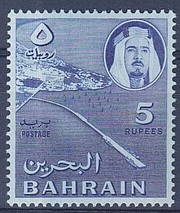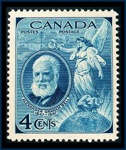
Discussion - Member to Member Sales - Research Center

Discussion - Member to Member Sales - Research Center

The collection represents a very narrow slice of history and commerce during a period when the region of east central Indiana and northwest Ohio were experiencing an incredible industrial boom. Natural gas had been discovered in the 1870s. It seemed like the entire US glass manufacturing industry suddenly picked up and moved westward into this region to take advantage of the cheap fuel and the railroads that already existed for the most part. Many cities had glass factories. They were everywhere. Unfortunately, the belief that the gas would be available for future generations was overly optimistic by several generations. Within a generation, gas production had declined dramatically. The development of the gas field was mismanaged as were the public's expectations. The gas was squandered through opulent displays and other wasteful practices. Many glass factories closed after the turn of the century, but the auto industry filled the gap in many of these small- to medium-size cities with available skilled labor. It was a convenient transition.
I've got 38 reverse setoffs identified so far. There are probably several more, but they're tucked away in glassines where they're sorted by readable city and town names or, absent that, by fancy/geometric cancels. Reverse setoff examples were a low priority when I was sorting and could be anywhere among the envelopes. The three presented here are better examples that I happen to have scanned recently. The majority of those I've identified are considerably less impressive.
The originating post office for this first one is unknown, but the envelope probably came to Union City from an Ohio town. The partial CDS and the ellipse killer on the second example are unclear but appear to match Toledo, Ohio, cancels from that era. (Toledo is on Lake Erie in northwest Ohio.) Toledo was 162 rail miles northeast of Union City. The third is from Van Wert, Ohio, a small city located about 50 air miles north-northeast of Union City.
The Van Wert example has a notch at the top of the indicium's outer frame line. I thought it was interesting that the setoff image didn't show any evidence of this notch. I wonder what that says about it actually being a die issue rather than some sort of inking issue?
I will try to add some more later.







3 Members
like this post.
Login to Like.
@keesindy - Extremely interesting post; please continue to share your collection and knowledge of this fascinating subset of postal stationary.

Login to Like
this post
This Scott U82 is an outlier in the 1890s Union City, Indiana cut square hoard. I am not sure how it and a handful of others from that earlier era got incorporated into that hoard. Nonetheless, it's another good example of the reverse setoff phenomenon.



1 Member
likes this post.
Login to Like.

Once again, this post is about the 11-12,000 cut squares from the Union City, Indiana, hoard I inherited from Dad nearly 20 years ago. These were accumulated in a single city and most were collected in 1891-1893 from businesses in the city.
The collection represents a very narrow slice of history and commerce during a period when the region of east central Indiana and northwest Ohio were experiencing an incredible industrial boom. Natural gas had been discovered in the 1870s. It seemed like the entire US glass manufacturing industry suddenly picked up and moved westward into this region to take advantage of the cheap fuel and the railroads that already existed for the most part. Many cities had glass factories. They were everywhere. Unfortunately, the belief that the gas would be available for future generations was overly optimistic by several generations. Within a generation, gas production had declined dramatically. The development of the gas field was mismanaged as were the public's expectations. The gas was squandered through opulent displays and other wasteful practices. Many glass factories closed after the turn of the century, but the auto industry filled the gap in many of these small- to medium-size cities with available skilled labor. It was a convenient transition.
I've got 38 reverse setoffs identified so far. There are probably several more, but they're tucked away in glassines where they're sorted by readable city and town names or, absent that, by fancy/geometric cancels. Reverse setoff examples were a low priority when I was sorting and could be anywhere among the envelopes. The three presented here are better examples that I happen to have scanned recently. The majority of those I've identified are considerably less impressive.
The originating post office for this first one is unknown, but the envelope probably came to Union City from an Ohio town. The partial CDS and the ellipse killer on the second example are unclear but appear to match Toledo, Ohio, cancels from that era. (Toledo is on Lake Erie in northwest Ohio.) Toledo was 162 rail miles northeast of Union City. The third is from Van Wert, Ohio, a small city located about 50 air miles north-northeast of Union City.
The Van Wert example has a notch at the top of the indicium's outer frame line. I thought it was interesting that the setoff image didn't show any evidence of this notch. I wonder what that says about it actually being a die issue rather than some sort of inking issue?
I will try to add some more later.







3 Members
like this post.
Login to Like.

re: 2c Washington 1890s Plimpton & Morgan / Purcell EFO reverse setoffs (or offsets, if you prefer)
@keesindy - Extremely interesting post; please continue to share your collection and knowledge of this fascinating subset of postal stationary.

Login to Like
this post

re: 2c Washington 1890s Plimpton & Morgan / Purcell EFO reverse setoffs (or offsets, if you prefer)
This Scott U82 is an outlier in the 1890s Union City, Indiana cut square hoard. I am not sure how it and a handful of others from that earlier era got incorporated into that hoard. Nonetheless, it's another good example of the reverse setoff phenomenon.



1 Member
likes this post.
Login to Like.

